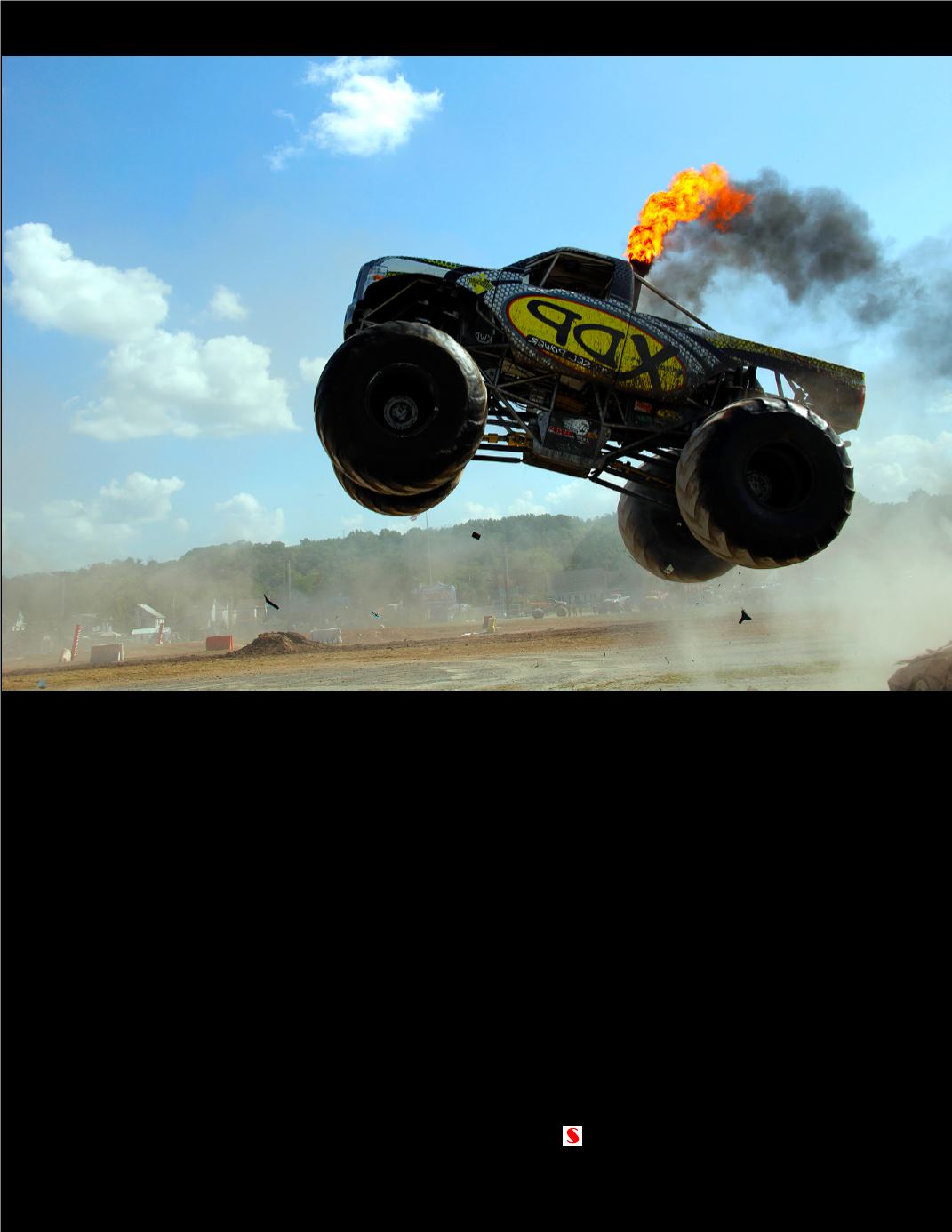

MARCH 2015 -
SEXY GLAM
MAGAZINE -
79
they generally aren’t actual trucks as they are commonly
referred to as, and only maintain their name due to the
common style of fiberglass truck bodies used on the
vehicles. Trucks now have custom built tubular chassis,
with four-link suspension to provide up to 4-feet of clear-
ance. Mounted just behind the driver on most trucks are
the engines, which are typically supercharged and run
on methanol an alcohol and corn-based oil and have
displacement up to 575 cubic inches (9.42 L). Axles are
mostly taken from either heavy-duty military trucks or road
vehicles like school buses, and are modified to have a
planetary gear reduction at the hub to help turn the tires.
All trucks have hydraulic steering in both the front and the
rear (four wheel steering), with the front wheels controlled
by the steering wheel and the rear wheels by a toggle
switch. The tires are typically “Terra” tires used on ferti-
lizer spreaders, and have measurements of 66″×43″×25″
(1.7×1.1×0.6 m). Most trucks utilize a modified and/or
custom designed automatic transmission, such as a Turbo
400, Power glide, Ford C6 transmission, or a Torque-flite
727. A limited number of trucks utilize a Lento transmis-
sion, which traces its roots to drag racing. Most of the
automatic transmissions are heavily modified with trans
brakes, manual valve bodies, and heavy duty gear sets.
Trucks running a Lento use a centrifugal clutch as op-
posed to a torque converter, which are used in automatic
transmissions. Lento transmissions are usually found in
two-speed or three speed configurations, and are com-
monly shifted using compressed CO2.
This image of Grave Digger, minus much of its body work,
reveals how far removed monster truck designs are from
the traditional trucks they somewhat resemble
The trucks have many safety features, several required
just to run in the small arenas that the trucks frequent.
Trucks are equipped with three kill switches: the RII (Re-
mote Ignition Interrupt), one within the driver’s reach in the
cab, and another at the rear of the truck so that all electri-
cal power may be shut off in the event of a rollover. Many
trucks are constructed with the driver sitting in the center
of the cab for visibility. Most cabs are shielded with Lexan
(or comparable polycarbonate), which not only protects
the driver from track debris, but also allows for increased
visibility. Drivers are required to wear fire suits, safety har-
nesses, helmets, and head and neck restraints. Most mov-
ing parts on the truck are also shielded, and high pressure
components have restraining straps, both in case of an
explosion.














